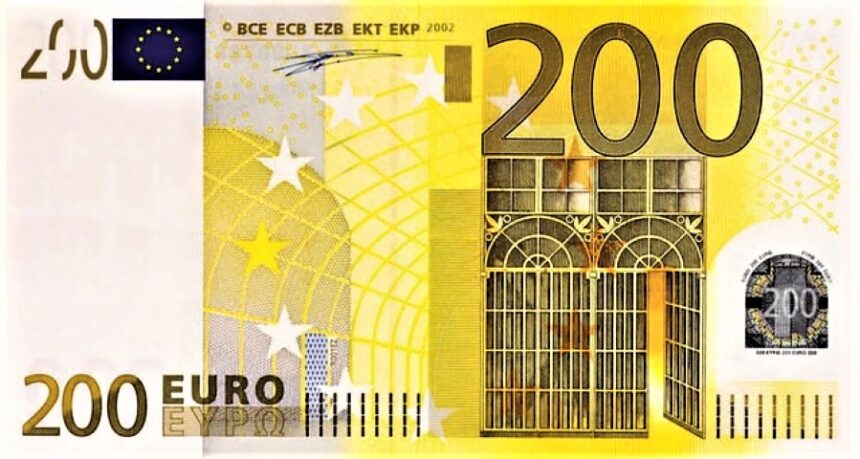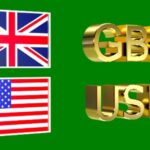The Euro to US Dollar (EURUSD) pair is treading water after the European Central Bank (ECB) left its benchmark interest rates unchanged during its July policy meeting. While the decision was widely anticipated by financial markets, the cautious tone from ECB President Christine Lagarde and the mention of rising external threats especially escalating trade tensions with the United States weighed modestly on the euro’s recent gains.
The pair fell slightly during American trading hours, snapping a four-day winning streak and hovering near 1.1763, as investors digested the ECB’s tone and awaited upcoming US economic data that could influence the Federal Reserve’s policy trajectory.
ECB Holds Rates Steady Amid Easing Inflation
In its July statement, the European Central Bank held all key interest rates steady:
Deposit Facility Rate: 2.00%
Main Refinancing Operations Rate: 2.15%
The decision marks another pause in the ECB’s tightening cycle, as inflation in the eurozone has returned to its 2% medium-term target. Despite persistent geopolitical uncertainty and sluggish growth across some member states, the ECB appears to have found some comfort in recent inflation data, allowing it to maintain a holding pattern.
The central bank reiterated its commitment to a data-dependent, meeting-by-meeting approach, avoiding any firm guidance on future rate hikes or cuts.
Lagarde Warns of Trade Risks and Euro Strength
During the post-decision press conference in Frankfurt, ECB President Christine Lagarde highlighted mounting external risks. Most notably:
The ongoing EU-US trade standoff, with an unresolved August 1 deadline looming.
Higher US tariffs on European goods, either enacted or expected.
The strong euro, which could hurt export competitiveness and weigh on growth.
Lagarde emphasized that these developments represent downside risks to the eurozone economy, especially if trade negotiations falter or US protectionism intensifies.
“The strength of the euro presents challenges for exporters, particularly in sectors sensitive to price competitiveness,” said Lagarde, reinforcing the message that monetary policy alone cannot address structural or geopolitical headwinds.
Markets React Cautiously, EURUSD Edges Lower
Despite the lack of any major policy surprise, EURUSD pulled back slightly during the American session. The retreat reflects a combination of:
A mildly hawkish tone from the Fed compared to the ECB’s cautious stance.
Concerns over EU-US trade relations affecting Eurozone export prospects.
Stabilization in the US Dollar Index (DXY), which hovers around 97.40, limiting the euro’s upside.
From a technical perspective, EURUSD remains above key support at 1.1700, but the lack of strong bullish momentum suggests traders are awaiting further catalysts either from Europe’s trade talks or incoming US macro data.
EU Scrambles to Resolve Trade Dispute Before August Deadline
With just days left before the August 1st trade agreement deadline, EU officials are reportedly locked in urgent negotiations with their US counterparts. Washington’s threat to impose new tariffs on EU autos and industrial goods remains on the table, raising alarm across export-reliant economies like Germany.
The impasse stems from disputes over digital services taxes, agriculture, and industrial policy alignment. While some progress has been made, Lagarde’s emphasis on downside trade risks indicates that the ECB remains highly sensitive to the outcome.
A deal before August could lift sentiment across European markets and give EUR/USD fresh legs to rally. Conversely, a breakdown in talks could trigger safe-haven dollar inflows, weighing on the euro further.
US Economic Data in Focus as Fed Decision Looms
As the ECB sticks to a wait-and-see approach, investor attention now turns to upcoming US data:
Flash PMIs for July
Initial Jobless Claims
Upcoming inflation prints (CPI and PCE)
Fed Chair Jerome Powell’s Jackson Hole speech (August)
These indicators will shape expectations ahead of the Federal Reserve’s September policy meeting. The Fed has so far resisted calls to ease, signaling that inflation risks persist and that any cuts would only be considered with clear signs of labor market weakness or disinflation.
If US data remains resilient, US Dollar strength could continue, putting downward pressure on EURUSD in the coming sessions.
Eurozone Economic Resilience Faces External Headwinds
While eurozone inflation has stabilized, the broader economic picture remains fragile. Growth is uneven across the bloc, with some economies like Germany and Italy facing contraction risks, while others such as France and the Netherlands show modest expansion.
The ECB noted in its statement that business investment and industrial production remain below pre-pandemic trends, and that external demand is being hampered by geopolitical developments, including:
China’s slowing recovery
Russia-Ukraine conflict impact
Middle East tensions
Global protectionism trends
In this environment, the ECB expected to keep its tightening tools on hold and prioritize economic stability over aggressive disinflationary policy.
Conclusion: Range-Bound with Downside Bias
Looking ahead, EURUSD is likely to remain range-bound between 1.1700 and 1.1850, unless major macro catalysts emerge. While the pair has shown resilience amid US Dollar fluctuations, the balance of risks remains tilted slightly to the downside due to:
The ECB’s dovish tilt and lack of forward guidance.
Unresolved EU-US trade tensions.
Prospects of better-than-expected US economic data supporting the dollar.
Technical charts suggest support at 1.1700 and 1.1650, while resistance lies near 1.1820 and 1.1880. Breakouts on either side may require confirmation from fundamental triggers such as trade deals, central bank signals, or geopolitical developments.
Key Takeaways
ECB keeps rates steady as expected; Deposit Facility Rate at 2.00%.
Lagarde flags euro strength and trade tensions as downside risks.
EURUSD snaps four-day rally, trades modestly lower near 1.1763.
Markets await key US economic data to assess Fed outlook.
Trade deal deadline between EU and US looms large (August 1).
Disclaimer: This blog is for informational purposes only and does not constitute financial advice. Always conduct your own research and consult a professional advisor before making investment decisions.
[sc_fs_multi_faq headline-0=”h2″ question-0=”Why did the EURUSD fall after the ECB meeting?” answer-0=”Although the ECB kept rates unchanged as expected, the euro dipped due to the central bank’s cautious tone, concern over trade tensions with the US, and lagging forward guidance, which disappointed euro bulls.” image-0=”” headline-1=”h2″ question-1=”What risks did Christine Lagarde highlight?” answer-1=”Lagarde mentioned the strong euro as a challenge for exports and emphasized growing risks from EU-US trade disputes and higher US tariffs, which could damage business confidence and Eurozone growth.” image-1=”” headline-2=”h2″ question-2=”What is the current ECB deposit and refinancing rate?” answer-2=”As of July 2025: Deposit Facility Rate: 2.00% Main Refinancing Rate: 2.15%” image-2=”” count=”3″ html=”true” css_class=””]









